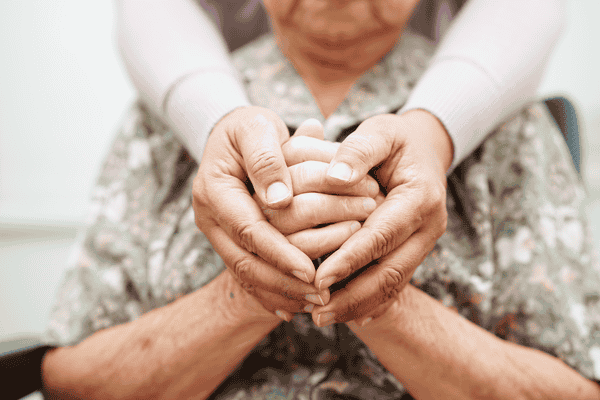In the tapestry of human relationships, few threads are as strong and vital as those woven by caregivers. These unsung heroes dedicate their time, energy, and often their entire lives to ensuring the well-being of their loved ones. Yet, in this noble pursuit, many caregivers find themselves facing an unexpected challenge: burnout. This state of exhaustion, both physical and emotional, can creep up silently, threatening not only the caregiver’s health but also their ability to provide the care their loved ones desperately need.
Imagine Sarah, a vibrant woman in her mid-forties, who took on the role of caring for her aging mother with Alzheimer’s. At first, Sarah approached her new responsibility with enthusiasm and love, determined to provide the best care possible. However, as weeks turned into months, and months into years, Sarah found herself increasingly exhausted, irritable, and disconnected from the world around her. She was experiencing caregiver burnout, a condition that affects countless individuals who devote themselves to the care of others.
In this exploration of caregiver burnout, we’ll delve into the signs and symptoms that signal when a caregiver might be reaching their limit. More importantly, we’ll discover strategies for finding relief and maintaining well-being in the face of this challenging but rewarding role. Through stories, insights, and practical advice, we aim to shed light on this often-overlooked aspect of caregiving, offering hope and guidance to those who give so much of themselves to others.
Understanding Caregiver Burnout: More Than Just Tiredness
Caregiver burnout is not simply a matter of feeling tired after a long day. It’s a complex state of physical, emotional, and mental exhaustion that develops over time when caregivers experience overwhelming stress and neglect their own well-being. This condition is particularly common among those caring for individuals with chronic illnesses, disabilities, or age-related conditions.
Dr. Elena Rodriguez, a psychologist specializing in caregiver support, explains, “Caregiver burnout is like a slow-burning fire that, if left unchecked, can consume all the energy and passion that initially fueled the caregiver’s commitment. It’s crucial to recognize the early signs and take action before the flames of burnout engulf the caregiver’s life.”
To truly understand the impact of caregiver burnout, let’s return to Sarah’s story. As her mother’s condition progressed, Sarah found herself navigating an increasingly complex maze of medical appointments, medication schedules, and daily care routines. The woman who once prided herself on her ability to juggle a successful career, a vibrant social life, and family responsibilities now felt like she was barely keeping her head above water.
“I used to look forward to spending time with Mom,” Sarah confided to a friend. “Now, I feel guilty admitting that sometimes I dread walking through her door. The moment I realize I’m feeling this way, I’m overwhelmed with shame. What kind of daughter am I?”
Sarah’s experience illustrates a crucial point about caregiver burnout: it doesn’t just affect the caregiver’s physical energy levels. It seeps into every aspect of their life, influencing their emotions, thoughts, and even their sense of self-worth.
The Silent Epidemic: Recognizing the Signs and Symptoms
Identifying caregiver burnout can be challenging, especially for those in the midst of it. The signs often develop gradually and can be easily dismissed as temporary fatigue or stress. However, recognizing these symptoms early is crucial for preventing the severe consequences of prolonged burnout.
Early Warning Signs: Caregiver Stress
Before full-blown burnout sets in, caregivers often experience a period of increased stress. This stage is characterized by:
- Feelings of Irritability and Restlessness: Small inconveniences that once rolled off your back now seem to grate on your nerves. You might find yourself snapping at loved ones or feeling a constant sense of agitation.
- Persistent Anxiety or Depression: A constant undercurrent of worry or sadness that doesn’t seem to lift, even during moments of respite.
- Sleep Disturbances: Difficulty falling asleep, staying asleep, or experiencing restless, unrefreshing sleep are common signs of caregiver stress.
- Physical Symptoms: Frequent headaches, unexplained aches and pains, or a general feeling of being run down can all be physical manifestations of stress.
For Sarah, these early signs manifested in subtle ways. She found herself losing patience with her mother’s repetitive questions, something she had always handled with grace before. Her usually sound sleep became punctuated with worry-filled nights, leaving her feeling drained before the day even began.
The Deepening Shadow: Symptoms of Caregiver Burnout
As stress continues unabated, it can evolve into full caregiver burnout. This more severe state is often marked by:
- Emotional Exhaustion: Feeling overwhelmed, emotionally drained, and unable to cope with day-to-day challenges. Sarah described this as feeling “emotionally bankrupt,” unable to summon the compassion and patience she knew her mother needed.
- Social Withdrawal: Caregivers may find themselves pulling away from friends and family, declining invitations, and losing interest in activities they once enjoyed. For Sarah, her once-vibrant social life dwindled to occasional, obligatory check-ins with friends.
- Neglect of Personal Needs: Self-care often falls by the wayside. Skipping meals, forgetting medical check-ups, or neglecting exercise are common as the caregiver’s focus narrows exclusively to their loved one’s needs.
- Changes in Appetite and Weight: Some caregivers may experience significant weight loss or gain as their eating habits change in response to stress.
- Increased Vulnerability to Illness: The toll of chronic stress can weaken the immune system, making caregivers more susceptible to colds, flu, and other illnesses.
- Feelings of Resentment: As burnout deepens, caregivers may start to resent the person they’re caring for or family members who aren’t contributing to the caregiving efforts. Sarah found herself harboring resentment towards her siblings who, living in different states, couldn’t provide daily support.
- Loss of Purpose: The sense of purpose that initially drove the caregiver’s efforts may fade, replaced by a feeling of going through the motions without joy or satisfaction.
Dr. Rodriguez emphasizes, “These symptoms aren’t a sign of weakness or failure. They’re a natural response to the immense challenges of caregiving. Recognizing them is the first step towards reclaiming your well-being and, ultimately, becoming a more effective caregiver.”
The Hidden Costs of Caregiver Burnout
The impact of caregiver burnout extends far beyond the individual caregiver. It creates a ripple effect that touches every aspect of their life and the lives of those around them.
Impact on Personal Health
Chronic stress and burnout can lead to serious health issues. Studies have shown that caregivers experiencing burnout are at increased risk for cardiovascular disease, weakened immune function, and accelerated cognitive decline. Sarah, who had always prided herself on her health, found herself battling frequent colds and struggling with high blood pressure for the first time in her life.
Strain on Relationships
As caregivers withdraw socially and struggle with increased irritability, their relationships often suffer. Marriages can be strained, friendships may fade, and even the relationship with the care recipient can become fraught with tension and resentment.
Professional Consequences
Many caregivers, like Sarah, find that their professional lives are impacted by their caregiving responsibilities. Decreased productivity, increased absenteeism, and even job loss are not uncommon consequences of caregiver burnout.
Quality of Care
Perhaps most concerning is the potential impact on the quality of care provided. As burnout progresses, caregivers may find it increasingly difficult to provide the level of care and attention their loved ones need. This can lead to feelings of guilt and inadequacy, further exacerbating the cycle of burnout.
Breaking the Cycle: Strategies for Coping and Finding Relief
Recognizing the signs of caregiver burnout is crucial, but it’s only the first step. The next, equally important phase is taking action to address burnout and prevent its recurrence. Here are some strategies that can help caregivers find relief and restore balance to their lives:
1. Embrace Self-Compassion
One of the most powerful tools in combating caregiver burnout is self-compassion. This means treating yourself with the same kindness and understanding you would offer a friend in a similar situation.
Dr. Rodriguez advises, “Start by acknowledging the difficulty of your role. Caregiving is one of the most challenging responsibilities a person can take on. It’s okay to have moments of frustration, sadness, or even anger. These feelings don’t make you a bad caregiver; they make you human.”
For Sarah, practicing self-compassion meant learning to quiet the voice of self-criticism that constantly told her she wasn’t doing enough. She began to recognize and celebrate the small victories in her caregiving journey, like the moments of connection she shared with her mother during lucid periods.
2. Prioritize Self-Care
Self-care is not selfish; it’s essential. Think of it as maintaining your caregiving equipment – you wouldn’t expect a car to run without regular maintenance, and you can’t expect yourself to provide care without taking care of your own needs.
- Physical Self-Care: This includes regular exercise, a balanced diet, and adequate sleep. Sarah started with small steps, like a 15-minute walk each day and setting a regular bedtime routine.
- Emotional Self-Care: Find outlets for your emotions. This might be through journaling, talking with a friend, or seeking professional counseling. Sarah found relief in a weekly therapy session where she could freely express her feelings without judgment.
- Spiritual Self-Care: For many, connecting with their spiritual or philosophical beliefs can provide comfort and perspective. Whether through formal religious practice, meditation, or simply spending time in nature, nurturing your spiritual side can be deeply restorative.
3. Build a Support Network
No caregiver should have to go it alone. Building a strong support network is crucial for long-term sustainability in caregiving.
- Family and Friends: Don’t be afraid to ask for help. Sarah finally reached out to her siblings, explaining her situation honestly. They worked together to create a schedule where her brothers would visit for a week each month, giving Sarah much-needed respite.
- Support Groups: Joining a caregiver support group can provide a sense of community and a wealth of practical advice from others who truly understand your situation. Sarah found an online support group for children of parents with Alzheimer’s, which became a lifeline of understanding and encouragement.
- Professional Help: Sometimes, the support of a professional therapist or counselor can make all the difference. They can provide strategies for coping with stress and tools for managing the emotional challenges of caregiving.
4. Set Realistic Expectations
It’s common for caregivers to set impossibly high standards for themselves. Learning to set realistic expectations is key to preventing burnout.
- Prioritize Tasks: Not everything needs to be done perfectly. Focus on what’s truly important and let go of less critical tasks.
- Learn to Say No: It’s okay to set boundaries and say no to additional responsibilities that might overwhelm you.
- Accept Imperfection: Remember that you’re doing your best in a challenging situation. Perfection is not the goal; compassionate care is.
5. Explore Respite Care Options
Respite care provides temporary relief for primary caregivers, allowing them to take a break and recharge. Options can include:
- In-Home Respite: Professional caregivers can come to the home to provide care for a few hours or even overnight.
- Adult Day Care Centers: These centers provide a safe environment for seniors during the day, allowing caregivers to work or attend to other responsibilities.
- Short-Term Nursing Homes: Some facilities offer short-term stays, providing round-the-clock care for your loved one while you take an extended break.
Sarah finally decided to try an adult day care center for her mother three days a week. This gave her time to catch up on her own life, run errands, and even return to her part-time job, which she had been close to losing due to frequent absences.
6. Maintain Connections
While it’s easy to become isolated in the caregiving role, maintaining social connections is vital for emotional health.
- Schedule Regular Social Time: Even if it’s just a quick coffee with a friend or a phone call with a family member, regular social interaction can provide a much-needed emotional boost.
- Pursue Hobbies: Try to carve out time for activities you enjoy. Sarah rediscovered her love for painting, setting aside an hour each evening after her mother went to bed to work on her art.
- Stay Connected to Your Community: Whether through religious organizations, volunteer work, or local clubs, maintaining a connection to your broader community can provide a sense of purpose and belonging outside of your caregiving role.
The Road to Recovery: Sarah’s Journey
As Sarah implemented these strategies, she began to see a gradual but significant change in her life. The constant cloud of exhaustion began to lift, and she found herself able to approach her caregiving duties with renewed patience and compassion.
“It wasn’t an overnight transformation,” Sarah reflects. “There were still challenging days, and I sometimes felt guilty for taking time for myself. But I began to realize that by taking care of myself, I was actually becoming a better caregiver for my mom.”
Sarah’s story is a testament to the resilience of the human spirit and the power of acknowledging and addressing caregiver burnout. Her journey reminds us that seeking help and prioritizing self-care are not signs of weakness, but rather acts of courage and love – not only for ourselves but for those we care for.
Conclusion: A Call for Compassion and Action
Caregiver burnout is a serious issue that affects millions of individuals who dedicate themselves to caring for others. By recognizing the signs early, implementing strategies for self-care, and seeking support, caregivers can find relief and sustain their vital roles without sacrificing their own well-being.
If you’re a caregiver feeling the weight of burnout, remember Sarah’s story. Take that first step towards self-care, reach out for support, and know that in taking care of yourself, you’re also ensuring the best care for your loved one.
For those who know a caregiver, consider this a call to action. Offer your support, lend a listening ear, or provide practical help. Sometimes, the smallest gestures can make the biggest difference in a caregiver’s life.
In the end, addressing caregiver burnout is not just about individual well-being; it’s about creating a society that values and supports the vital role that caregivers play. By recognizing and addressing this issue, we take an important step towards a more compassionate and supportive community for all.





